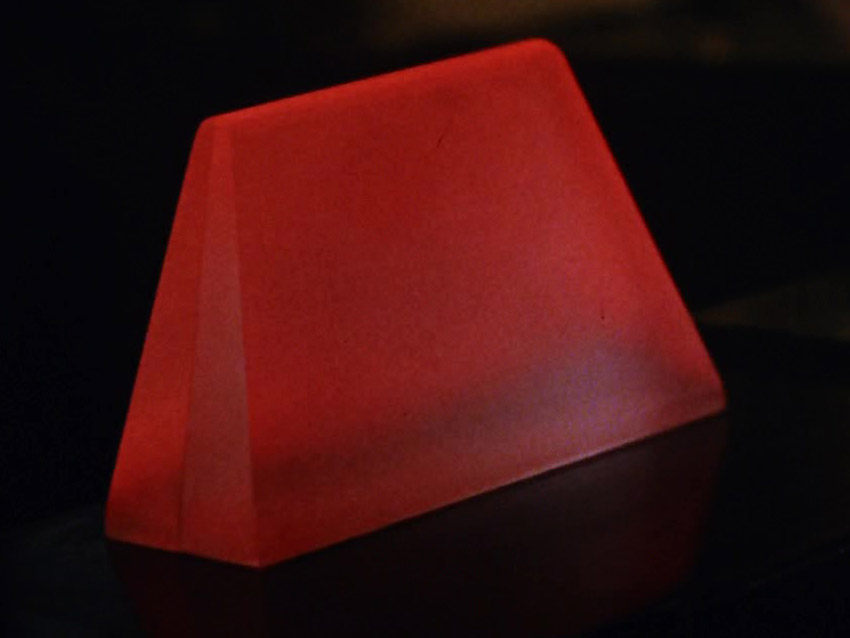Difference between revisions of "distress signal"
m |
m |
||
| Line 1: | Line 1: | ||
| − | {{ImageInfoBox2 | + | {{ImageInfoBox2|file=alert_red-tos02.jpg|caption=Alert klaxon ({{TOS03}})}} |
| − | {{ | + | {{First|{{TOS04}} ([[1966 (Production)#OCT13|13 Oct 1966]])}} |
{{Ad|AmazonTOSBD}} | {{Ad|AmazonTOSBD}} | ||
|}</div> | |}</div> | ||
Revision as of 21:52, 31 March 2023
Old-style distress signals—such as those in use aboard the S.S. Columbia when it disappeared in 2236—were designed to interfere with systems and attract the attention of a ship's crew. When the U.S.S. Enterprise NCC-1701 intercepted an old-style signal in 2254, collision warnings and the red alert klaxon were activated in response.[1] When the Enterprise was confronted by the First Federation Starship Fesarius during a tense First Contact on Stardate 1514.1, a small pilot vessel from the larger ship was disabled and sent out a weak distress signal.[2] When Harry Mudd fled into an asteroid field to escape pursuit by the Enterprise on Stardate 1329.1, he sent out a distress signal when his ship's power began to fail and was in danger of being destroyed.[3]
Notes and References
- ↑ Roddenberry, Gene (Executive Producer). "The Cage". Star Trek, season 0, episode 0 (Production number 01). Directed by Robert Butler. Written by Gene Roddenberry. Released 1986. Desilu Productions. 1965.
- ↑ Roddenberry, Gene (Executive Producer). "The Corbomite Maneuver". Star Trek, season 1, episode 10 (Production number 03). Directed by Joseph Sargent. Written by Jerry Sohl. Desilu Productions. 10 November 1966.
- ↑ Roddenberry, Gene (Executive Producer). "Mudd's Women". Star Trek, season 1, episode 6 (Production number 04). Directed by Harvey Hart. Written by Stephen Kandel. Desilu Productions. 13 October 1966.

